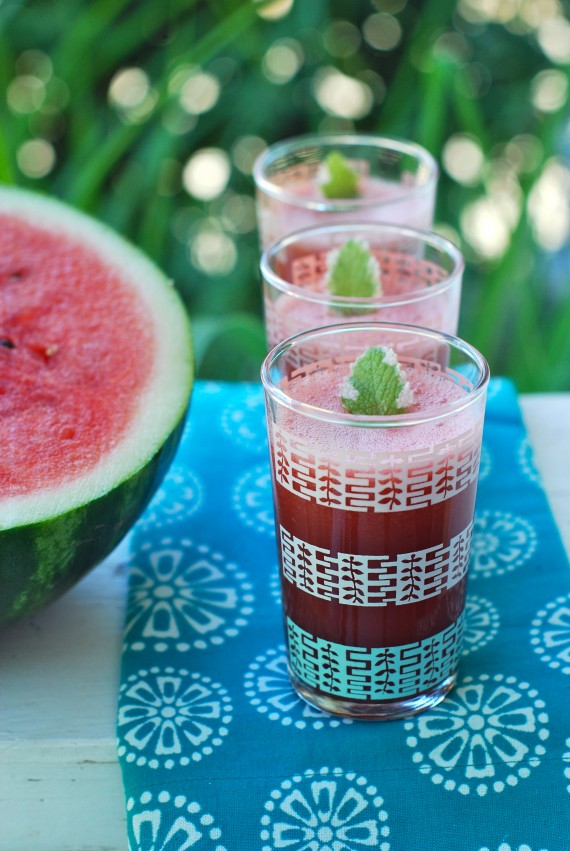 I would do anything for a glass of this refreshingly delicious juice right now to cool me down in this 110 f dry heat in Palm Springs, California. This is my first visit to this desert town and I am lovin’ it, but boy oh boy it’s hot! We are slowly getting climatized to this weather but there isn’t a handy dandy juice bar poolside serving up something like this easy watermelon juice. If there was, I’d be the first in line! Instead we are guzzling our water to stay hydrated and enjoying some fun & relaxing time with the kids at the pool. We’re on a family vacation with two other families creating memories and taking endless photos. Have you enjoyed some idle summer time with family yet?
I would do anything for a glass of this refreshingly delicious juice right now to cool me down in this 110 f dry heat in Palm Springs, California. This is my first visit to this desert town and I am lovin’ it, but boy oh boy it’s hot! We are slowly getting climatized to this weather but there isn’t a handy dandy juice bar poolside serving up something like this easy watermelon juice. If there was, I’d be the first in line! Instead we are guzzling our water to stay hydrated and enjoying some fun & relaxing time with the kids at the pool. We’re on a family vacation with two other families creating memories and taking endless photos. Have you enjoyed some idle summer time with family yet?
I managed to snap these photos earlier this summer for times like this where a very simple recipe would hit the spot, for you and for my summer schedule. This juice was inspired by Jessie Farrell of Jessie’s Juice Co. She makes the yummiest fresh juice if you don’t have a juicer and you would like to try some tasty, healthy flavour combos.
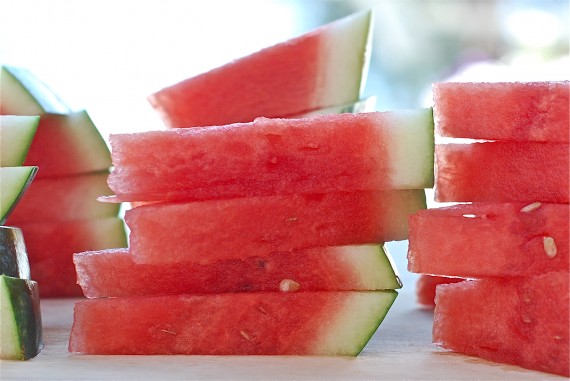 It’s important to use organic watermelon if you plan to juice the rind which is filled with beneficial vitamins and minerals. If you don’t have a juicer you can just as easily use only the watermelon flesh and process it in a blender adding some mint leaves as well.
It’s important to use organic watermelon if you plan to juice the rind which is filled with beneficial vitamins and minerals. If you don’t have a juicer you can just as easily use only the watermelon flesh and process it in a blender adding some mint leaves as well.
Watermelon and Fresh Mint Juice
Yield: 8 small glasses
1 small organic watermelon, chilled and roughly sliced
4-5 stems fresh mint, stems removed if using blender method
Method
Process in a juicer, one half of the watermelon with the rind on and the remaining half with the rind trimmed off.
Add the mint to the juicer mid way while juicing to be sure it is pressed thru.
Garnish with a mint leaf and serve immediately.
These would also make yummy popsicles if you have some left over or if you purchase a large watermelon as it does yield a nice amount of juice.
Watermelon 101
You may already know that melons don’t combine well with any other food. They have a mind of their own and need to be digested alone or else. If you’ve ever eaten watermelon for dessert right after dinner you’ve probably experienced it coming back on you for the evening. It’s because piling fruit on top of your dinner ferments the food you ate prior and you could kinda say “it’s off gassing”. So always eat your melon alone. It digests very quickly so if you are near meal time eat it first and then give it about 30-60 mins before eating your meal.
Watermelon is packed with some of the most important antioxidants in nature. It is an excellent source of vitamin C and vitamin A, notably through its concentration of beta-carotene. High intakes of vitamin C and beta-carotene can reduce the risk of heart disease, reduce the airway spasm that occurs in asthma. It can also reduce the risk of colon cancer, and alleviate some of the symptoms of osteoarthritis and rheumatoid arthritis. Watermelon is also a source of the potent antioxidant, lycopene also found in tomatoes and mangoes. Lycopene is highly beneficial for its antioxidant and cancer-preventing properties.
Why eat the rind? Believe it or not the rind has even more nutrients than the flesh! It is rich in citrulline which is a nonessential amino acid–meaning that your body manufactures it from other amio acids in the liver. It doesn’t need to be obtained directly thru the diet. However, some people may have deficiencies if their rate of production is not in line with their consumption. Citrulline is involved in the process of removing toxins from your liver. The rind has the same nutrients as the flesh mentioned above as well as smaller amounts of Thiamine, Riboflavin, Niacin, Vitamin B6, Calcium, Iron, Magnesium, Phorphorus, Potassium and even Zinc. You can eat the rind but do mind the green outside. Enjoy only in moderation as to how your tummy handles it. Like any fruit if you over do it, you’ll feel it. Juicing the rind is a great way to enjoy the benefits of the rind while it giving the juice a lowered sweetness as well as giving the rind a greater sweetness, so it’s a good thing.
Watermelon is only slightly acidic since the sugar content is relatively low. There are many fruits to enjoy but watermelon is one of the better ones as it has such a high water content and is extremely low in sugar compared to pineapple, bananas, oranges and even apples. So enjoy your watermelon especially when it’s hot out! What’s your favourite way to keep cool when temperatures rise outside?
I’ll be heading back to the pool now for a long refreshing dip–wishing I had some of this juice to enjoy. Until next week (if I’m not too hot to post) stay cool and buy yourself a watermelon to load up on nutrients, even if it’s not hot where you live!
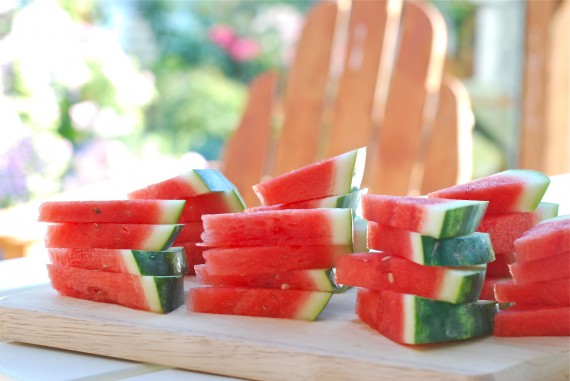


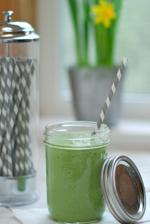 Alkaline Green Smoothie
Alkaline Green Smoothie Carrot, Jicama & Sweet Pepper Slaw
Carrot, Jicama & Sweet Pepper Slaw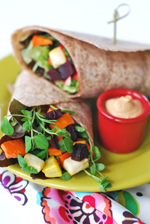 Roasted Root Wrap
Roasted Root Wrap
{ 2 comments }
Great post Julie!
I love the idea of making watermelon juice as I have seen it before but did not know to add the rinds! Thank you for all the useful research…I want to jump into that first photo!!!
thanks, good stuff.
Comments on this entry are closed.